 |
| Paul Dano and Zoe Kazan in Ruby Sparks |
 |
| Zoe Kazan as Ruby Sparks |
 |
| Calvin at his magical typewriter. |
The radical notion that women like good movies
 |
| Paul Dano and Zoe Kazan in Ruby Sparks |
 |
| Zoe Kazan as Ruby Sparks |
 |
| Calvin at his magical typewriter. |
I rented Persepolis before the recent Iranian election, and have been thinking ever since about the film.
Persepolis is adapted from the autobiographical graphic novels written by Marjane Satrapi (which I haven’t read), and represents the first graphic-novel-as-film. Other graphic novels have been made into films, but none (to my knowledge) have remained as true to form as this. Visually, the film is lovely, stark, and at times deeply disturbing.
 In Persepolis, we meet Marjane, a young girl living in Iran at the time of the Islamic revolution of 1979. The society changed drastically under Islamic law, as evidenced by Marjane’s teacher’s evolving lessons. After the revolution, in 1982, she tells the young girls, who are now required by law to cover their heads, “The veil stands for freedom. A decent woman shelters herself from men’s eyes. A woman who shows herself will burn in hell.” In typical fashion, the students escape her ideological droning through imported pop culture: the music of ABBA, The Bee Gees, Michael Jackson, and Iron Maiden.
In Persepolis, we meet Marjane, a young girl living in Iran at the time of the Islamic revolution of 1979. The society changed drastically under Islamic law, as evidenced by Marjane’s teacher’s evolving lessons. After the revolution, in 1982, she tells the young girls, who are now required by law to cover their heads, “The veil stands for freedom. A decent woman shelters herself from men’s eyes. A woman who shows herself will burn in hell.” In typical fashion, the students escape her ideological droning through imported pop culture: the music of ABBA, The Bee Gees, Michael Jackson, and Iron Maiden.
The history of Iran, while it determines the course of Marjane’s life, really is a backdrop—especially in the second half of the movie. In other words, the film is more about the experience of one woman than a documentary-style account of Iranian history. Once Marjane escapes the society she grew up in, her problems become much more ordinary for a Western audience, more commonplace. She vacillates between different crowds of people. She falls in love and has her heart broken. She feels angst and confusion over who she is and what she wants. She goes home to Iran for a time and, like so many others, ultimately finds she cannot return home.
As evident in the film, Satrapi grew up in a wealthy, educated, progressive Iranian family. They sent her to Vienna as a teenager so she didn’t have to spend her adolescence in such a repressive society, and because they feared what might happen to such an outspoken young woman there. While acknowledging her privilege, not many women in circumstances other than these would be able to accomplish what she has.  Satrapi isn’t afraid to show missteps she makes in growing up, either. Young Marjane learns that her femininity, even when repressed by law, offers great power—and shows how she misuses that power. Missing her mother’s lesson at the grocery store about female solidarity, she blames other women for her troubles (“Ma’am, my mother is dead. My stepmother’s so cruel. If I’m late, she’ll kill me. She’ll burn me with an iron. She’ll make my dad put me in an orphanage.”), and falsely accuses a man of looking at her in public to avoid the law coming down on her.
Satrapi isn’t afraid to show missteps she makes in growing up, either. Young Marjane learns that her femininity, even when repressed by law, offers great power—and shows how she misuses that power. Missing her mother’s lesson at the grocery store about female solidarity, she blames other women for her troubles (“Ma’am, my mother is dead. My stepmother’s so cruel. If I’m late, she’ll kill me. She’ll burn me with an iron. She’ll make my dad put me in an orphanage.”), and falsely accuses a man of looking at her in public to avoid the law coming down on her.
Persepolis is, in every definition of the term, a feminist film. There are strong, interesting female characters who sometimes make mistakes. The women, like in real life, are engaged in politics and struggle with expectations set for them and that they set for themselves. They have relationships with various people, but their lives are not defined by one romantic relationship, even though sometimes it can feel that way.
As much as I like this movie, I can’t help but write this review through the lens of an interview Satrapi gave in 2004, in which she claimed to not be a feminist and displayed ignorance of the basic concept of feminism. I simply don’t believe gender inequality can be dissolved through basic humanism — especially in oppressive patriarchal societies like Iran. I wonder if feminism represents too radical a position to non-Westerners, and if her statements were more strategy than sincerity. Making feminism an enemy or perpetuating the post-feminist rhetoric isn’t going to help anyone. That said, this is a very good movie and I highly recommend it.
The Nation: Icons of the New Iran by Barbara Crossette
Feminist Peace Network: Memo to ABC: Lipstick Revolution FAIL
——
 |
| Steve Carell and Keira Knightley in Seeking a Friend for the End of the World |
| Keira Knightley as Penny |
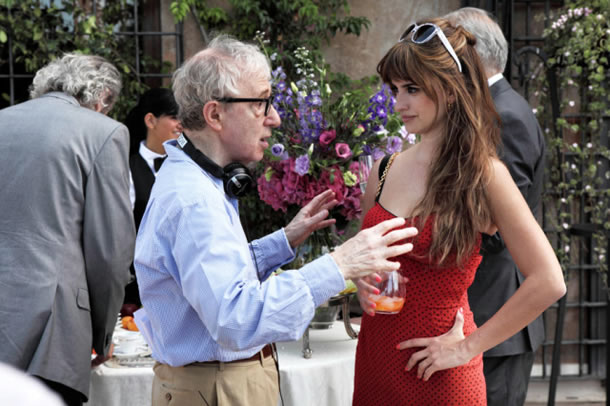 |
| Woody Allen and Penelope Cruz on set of To Rome With Love |
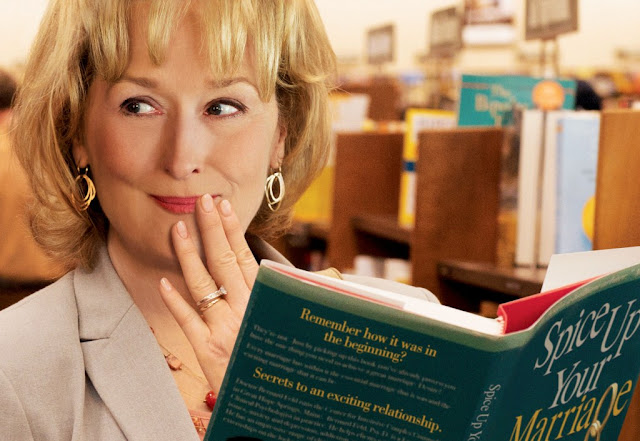 |
| Meryl Streep in Hope Springs |
Guest post written by Molly McCaffrey originally published at I Will Not Diet. Cross-posted with permission.
 |
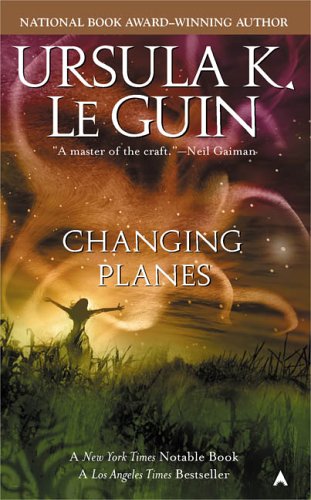 |
Guest post written by Carissa Harwood.
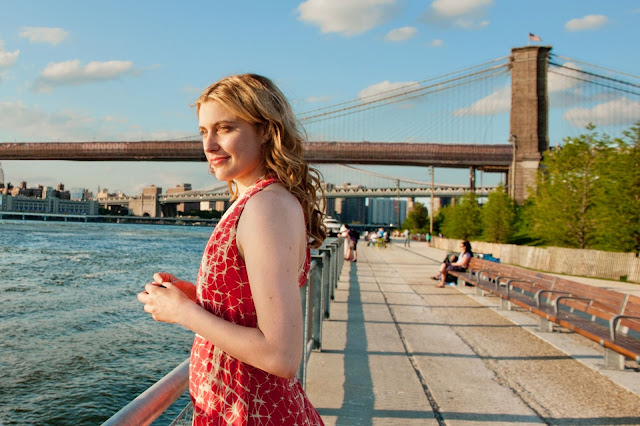 |
| Greta Gerwig as Lola in Lola Versus |
Romantic comedies usually make me want to gouge my eyes out. Now, that doesn’t mean I hate them all. Some of my favorite films are rom-coms. But every now and again, one comes along that entertains rather than enrages me. Following in the footsteps of female-fronted comedies Bridesmaids, Young Adult and Girls (all of which I love), Lola Versus follows a single woman making horrendously bad decisions yet struggling to find her way.
Supporting Lola through her break-up are her best friends supportive Henry (Hamish Linklater, who I will forever think of as Julia Louis-Dreyfuss’ brother on New Adventures of Old Christine) and scene-stealing sarcastic Alice (Zoe Lister Jones, who also co-wrote the script).
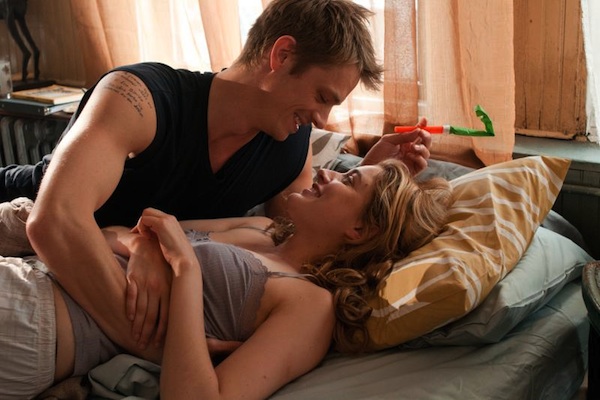 |
| Joel Kinnaman and Greta Gerwig in Lola Versus |
As she tries to move on, we witness Lola ask a man to put on a condom and take a pregnancy test. Not only is it great to see aspects of sex and reproduction. It’s refreshing to see a woman exert her sexuality but not be defined by it merely an object for the male gaze.
While it started off promising, I gotta admit, the bulk of Lola Versus pissed me off. I wanted to shout at the screen, “No, Lola!! Don’t sleep with him!” or “Spend more time with your girlfriends!” or “Don’t believe him that he’s clean…whatever the fuck that means…make him wear a fricking condom!!” or “Stop smoking weed with (and being nice to) your ex-fiancé who dumped you!”
By the end of the film, I realized I wasn’t mad at the movie per se. I was pissed at Lola’s bad choices.
But isn’t that life? Isn’t that what people do when they’re dumped? They obsess over their exes, retracing the steps of their relationship, trying to deciper the clues that led to the relationship’s unraveling. They pine for them. They strategize ways to accidentally run into them (or avoid them like the plague). Either way, there’s a lot of strategizing involved. I wanted Lola to be empowered. To stop obsessing over nice but douchey guys who didn’t appreciate her or who weren’t right for her. I wanted her to hang out with her female friends. But the way the plot unfolded rang more realistic and way more uncomfortable.
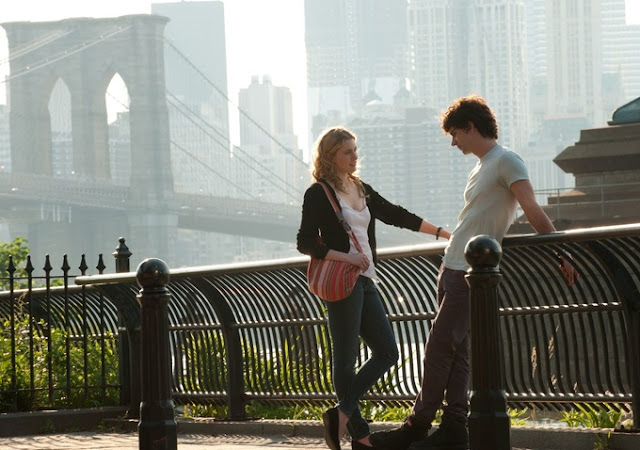 |
| Greta Gerwig and Hamish Linklater in Lola Versus |
In an interview with Collider, Gerwig shared how the script spoke to her because Lola was such a hot mess:
“Sometime female characters, especially in the genre of something that people consider rom-com, make mistakes in a cute way or they’re a mess in a way that’s palatable. I like that Lola is a real mess. She’s making big mistakes and it’s not just cute. It’s destructive and self-absorbed and not awesome and she has to recover from that. She stands to damage relationships around her. Even as this crappy thing happens to her at the beginning of the movie, she uses that as an excuse to behave badly for the next year of her life. I like movies about women behaving badly, because women behave badly just like men, and we’re not always adorable and cute about it.”
Gerwig is absolutely right. Women in film aren’t usually allowed to be messy or unlikeable. Although that’s slowly changing.
Lola Versus made me uncomfortable because it reminded me of too many of the bad decisions I’ve made in my life. Falling back into sleeping with people I shouldn’t. Agonizing and analyzing every single conversation. Calling an ex, desperately hoping to rekindle that spark. Settling for someone not that great in a vain attempt to fill the gaping void that my partner’s disappearance has left.
I eventually stopped all this time-sucking nonsense. I thought by hanging onto relationships, I was boldly forging ahead seeking my happiness. But that’s not what I was really doing. I was placing my happiness in the hands of others. And so was Lola.
 |
| Zoe Lister Jones and Greta Gerwig in Lola Versus |
The movie tackles the topic of single women and aging. As we approach or pass turning 30 (like me!), we contend with societal expectations. Not that turning 30 is some horrible harbinger of doom. Quite the contrary. I’ve been more confident and comfortable in my own skin after turning 30. But it’s still hard to silence the social cues that tell us our lives should fall into place in a certain pattern.
Here’s the thing about Lola Versus. It frustrated me and I rarely laughed out loud. Although the scene where she screams at the party…priceless. But Gerwig mesmerized me and the film enthralled me. It passes the Bechdel Test (yay!!!). And it boasts one of the absolute best endings I’ve ever seen in a film. Ever.
In every romantic comedy, it’s all about two people getting together in the end. Or if it’s really radical — and trust me, I use that term facetiously — they’re already together in the beginning and it’s about the two lovers facing obstacles but ultimately staying together. The only rom-coms I can recall that deviate from this predictable paint by numbers path are Annie Hall, The Break-Up and Kissing Jessica Stein.
I don’t want to spoil the ending. But I will say this. (Aver your eyes if you want to be completely surprised) Lola achieves happiness, something that had eluded her all along. She suffered writers’ block, not being able to silence the voices and noises in her head — ironic since her dissertation was analyzing silence in film — but now she could write again. She became happy with who she was and with her life.
And it had nothing to do with a man.
Now that doesn’t mean she says fuck you to all her relationships. While she knew how to love other people, she didn’t know how to love herself, a lesson most of us need to learn.
Lola talks about Cinderella with her mom (Debra Winger…so glad to see her in more films!). She tells her that she liked Cinderella as a kid but how fairy tales are toxic, teaching girls to wait for a man to sweep them off their feet and give them shoes. Fairy tales set women up for failure. We put these unrealistic expectations on love and romance. Now, I’m not arguing for settling, not by any means. But fairy tales teach girls that when they grow up, they should wait around for men; that they should put romantic relationships before everything else in their life even sacrificing themselves. Lola realizes that she must navigate her own happiness rather than relying on a man or some lofty romantic fairytale.
Too many romantic comedies subject women to stereotypical gender roles. Needy, passive, just out to find a man. Can’t romantic comedies be intelligent? Can’t they highlight the importance of female friendship too?? Yes, yes they can. And Lola Versusdoes.
One of my favorite lines in the film is when Lola says:
 |
| Liz Lemon (Tina Fey) in 30 Rock |
This post written by Peggy Cooke was originally published at Abortion Gang and is cross-posted with permission.
I have had a love-hate relationship with 30 Rock almost since the show’s inception. I love it purely because it is smart and hilarious, and the Liz Lemon character is such an unabashed loser that it’s hard sometimes to remember how conventionally attractive she actually is. There are so many things about it that I like, in fact, that it took me a lot longer than it usually does to start getting annoyed with its faults.
It was an episode a couple seasons ago that did it for me; you might remember it. In the first five minutes, a man beats up and decapitates a cardboard display of Liz, and Jenna gets a book thrown at her face. Then there is a truly disgusting “joke” involving Pete raping his wife in her sleep, which gets not one, but two visual depictions. All played for laughs. Because of various elements of my privilege I was able to shrug off some of the vile sexist and transphobic “humour” of the show, but that episode really crossed a line for me.
I keep watching it, and I’m glad I do, because on Thursday night while waiting for the (in my opinion) much funnier, smarter, and warmer Parks and Recreation to start, I tuned in to 30 Rock and caught an episode that not only depicted a smart, friendly and funny little feminist child, but also involved some nuanced commentary on the American economy. But best of all was a scene in which Liz Lemon told Jack, “You are being so transvaginal right now!”.
Immediately my Twitter feed repeated the quote back to me via about six or seven different people, not all of whom are reproductive rights activists. This is the true joy of 30 Rock for me – they manage to sneak in the kind of jokes that tell you that someone is paying attention, even if it is just Tina Fey or a bunch of nerdy TV writers. Sometimes as an activist you get so wrapped up in a particular issue, you start to lose the ability to tell how much the general public actually knows about it. Is it common knowledge that these horrible transvaginal ultrasound requirements (and other ridiculous abortion restrictions) are sweeping across the US, or is this just something that abortion geeks like us pay attention to?
Not that 30 Rock making a joke about something means it is common knowledge – obviously there is an intellectual elitism that is almost essential to fully appreciating this show (another thing that bothers me about it…but also makes me feel smart when I get all the jokes). But Liz Lemon calling a controlling, patronizing, uber-privileged man “transvaginal” – it’s so, so important that she uses it in the context of calling Jack out for being intrusive – is important. It means that if this isn’t something we’re talking about, it should be. Because a lot of people are being really transvaginal right now about our wombs and lives. Liz Lemon’s got our back.
Abortion is healthcare — a routine, normal and legal medical procedure. Yet most films and TV don’t ever broach the subject. Their characters don’t get abortions, people don’t talk about abortion. That’s why I’m thrilled about Cristina Yang’s abortion storyline on Grey’s Anatomy.
Owen eventually supports Cristina and accompanies her to the abortion, holding her hand, both physically and emotionally. Although I’ve heard (I’m a bit behind in watching), that he later accuses her of killing their baby. Horrible. As Feministing’s Maya talked about Hollywood’s “rules for abortion,” she asserted that Cristina would probably have to pay for her decision down the road. Sadly, it seems like that might be true.
As RH Reality Check’s Martha Kempner points out, there weren’t any “extenuating circumstances” involving Cristina’s pregnancy. She wasn’t in medical danger; the fetus wasn’t in any danger. Cristina chose abortion because she didn’t want to be pregnant.
 |
| Kerry Washington as Olivia Pope in Scandal |
I love Grey’s Anatomy. Is it melodramatic? Absolutely. But its dramatic storylines, sharp dialogue and diverse cast have hooked me from the very first episode. So when I discovered writer, producer, showrunner Shonda Rhimes created Scandal, a political thriller TV series revolving around a woman of color, I knew I had to watch.
Amber‘s Picks:
White Until Proven Black: Imagining Race in Hunger Games by Anna Holmes for The New Yorker
Hollywood’s Female Trouble: Part 1, The Writers by Xaque Gruber for The Huffington Post
What’s Wrong with this Picture Illustrating Vanity Fair’s Women in Television Article? by Alyssa Rosenberg for ThinkProgress
5 Movie Characters that Changed the Way We View Women by Thelma Adams for AMC’s filmcritic.com
Social media: Is it too feminine? by Chelsea Sheasley for The Christian Science Monitor
5 Ways Modern Men Are Trained to Hate Women by David Wong for Cracked
Stephanie‘s Picks:
“Top 20 Fierce Women, Numbers 15-11” from Down With Film
“Future of Feminism: Girls and Women, Don’t Be Camera-Shy!” by Aviva Dove-Viebahn for Ms. Magazine
“Women on Film: How to Rebel” by Katherine Butler for Ecosalon
“Sexist TV: A Spotter’s Guide” by Clem Bastow for Daily Life
“Geena Davis: If Girls Can See It, They Can Be It” from the Microsoft Blog
Megan‘s Picks:
I See White People: Hunger Games and a Brief History of Cultural Whitewashing by Lindy West for Jezebel
’16 and Pregnant’ Brings Abortion to Primetime by Michelle Kinsey Bruns for Women’s Media Center
Racist Hunger Games Fans Illustrate All that’s Wrong with the World by Maya for Feministing
‘Two and a Half Men’ Co-Creator is Rebuked for Remarks About Women by Dave Itzkoff for NY Times
Hollywood’s Female Trouble: Part 2, The Directors by Xaque Gruber for The Huffington Post
Transgender Women in Puerto Rico Featured in New Documentary by Joseph Pedro for Passport Magazine
Two and a Half Men Creator Says Too Many Women on TV – Numbers Show Otherwise by Amy Tennery for The Jane Dough
Where Are the Women? National Magazine Award Edition by Maya for Feministing
What have you been reading this week?